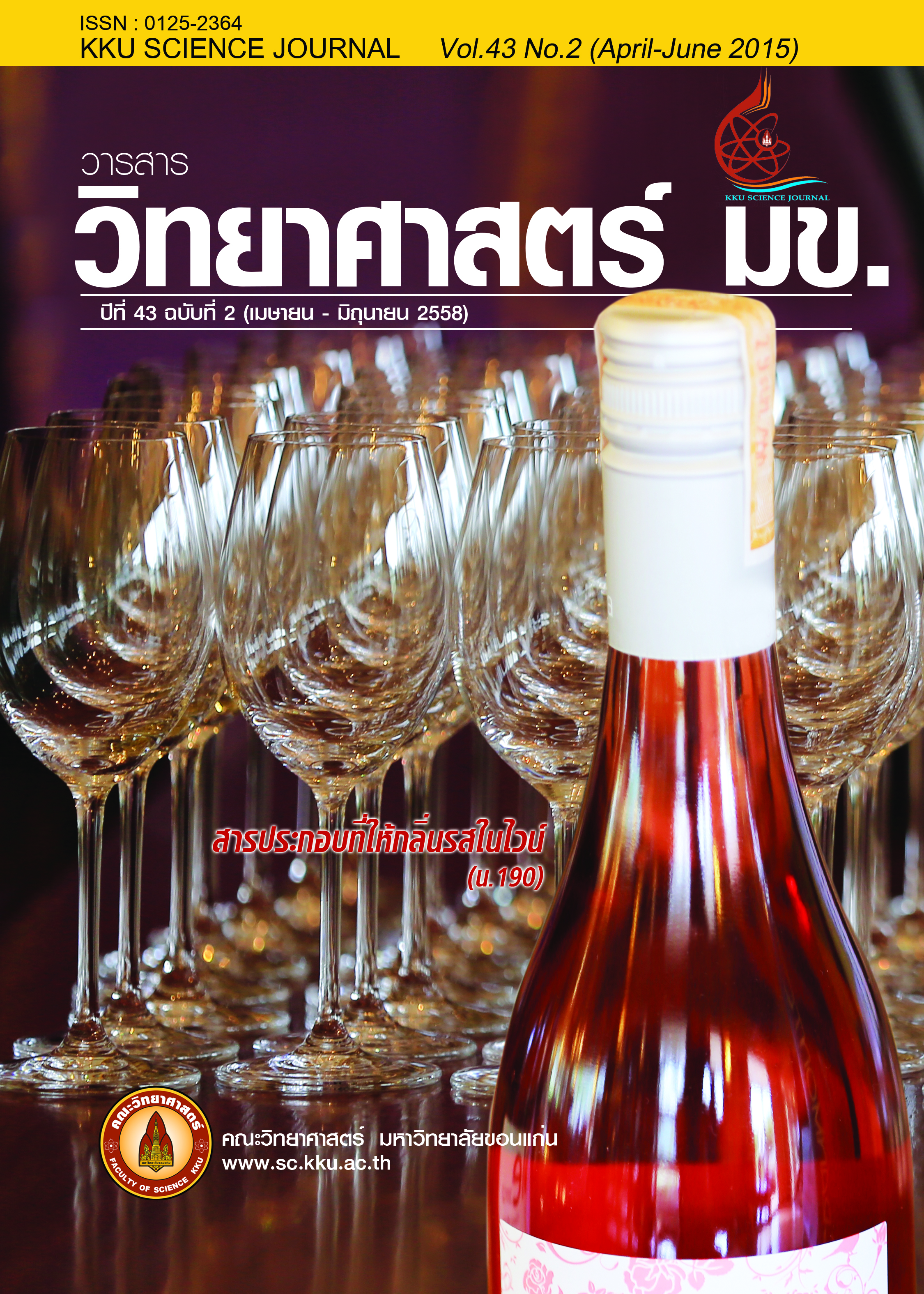Exploitation of Eri – Mulberry Silkworm Degumming Solution for Cultivation of Entomopathogenic Bacteria and Its Efficiency to Control Beet Armyworm
Main Article Content
Abstract
The degumming waste water of eri and mulberry silkworm was studied on the exploitation by using as a medium for cultivation of a major bacteria as an insect biopesticide, Bacillus thuringiensis var. kurstaki (Btk) and B. thuringiensis var. israelensis (Bti). Distilled water
and sodium carbonate (Na2CO3) solution were used as degumming treatment. Degumming water using distilled water or Na2CO3 solution was mixed with nutrient broth (NB) or direct use as the cultured media. The result showed that in case of using distilled water and comparing to NB, the Btk and Bti grew the best on NB (2.95×109 and 1.18×109 cfu/ml), respectively. The subordinate
treatment for Btk was NB + eri degumming water (EDW) + mulberry degumming water (MDW) (2.63×109 cfu/ml), which was not significantly different to NB. However, for Bti the following treatment was NB + EDW (7.88×108 cfu/ml) but was statistically significant (P<0.05) to NB. On the other hand, using Na2CO3 as degumming solution, the Btk and Bti grew the best in NB + eri degumming Na2CO3 solution (EDS) + mulberry degumming Na2CO3 solution (MDS), which exhibited bacterial cells of 4.94×109 and 4.04×109 cfu/ml, respectively. The Btk obtained from cultivation with different media were tested in laboratory on the efficiency to control beet armyworm (Spodoptera exigua). It was revealed that the infected mortality of S. exigua was 90.00, 63.33, 56.67 and 56.67% from NB, EDS, EDW and MDS, respectively.
Article Details

This work is licensed under a Creative Commons Attribution-NonCommercial-NoDerivatives 4.0 International License.


